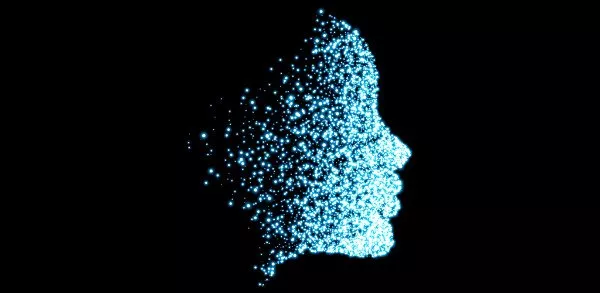Welcome to the important news site.
Face recognition technology has become a part of the lives of many people around the world. From public surveillance cameras in the streets and stores to tagging friends on social networks and security measures in smartphones, facial recognition can now be found widely in various places and devices, and its use is only expected to increase over time. find.
All technologies have their own advantages and disadvantages, it just depends on how you use them. And naturally, facial recognition technology is no exception to this rule. Let’s review what facial recognition technology is and what advantages and disadvantages it brings.
Advantages of facial recognition
Using facial recognition can have various benefits for society, benefits such as increasing security, preventing crimes, and reducing human interactions. This technology can even help in medical matters.
Helping find missing persons: Law enforcement agencies use facial recognition to locate missing persons, and to this day we have heard many stories of children being found after being separated from their parents and then reunited with them. they returned When you integrate this technology with age prediction software, you can determine what a child has looked like over the years, and it becomes possible to find children who have been missing for several years.
Protecting businesses against theft: Business owners use facial recognition software along with security cameras to be able to identify potential shoplifters. Since people are less likely to commit crimes if they know they are being watched, this technology can also act as a deterrent.
Improved security measures: Facial recognition can lead to improved security. Many airports around the world now use facial recognition technology continuously at checkpoints and are therefore able to identify potential criminals or threats against airlines and passengers. Banks and other similar institutions also use facial recognition to prevent fraud, because this technology can identify people who have already committed crimes and alert the bank.
Reduction of human interaction: Facial recognition requires much less human resources than other security measures such as fingerprint sensors. This technology does not require contact or direct physical human interaction. Instead, everything is managed by artificial intelligence in a completely automatic and fast process. On the other hand, there will be no need for physical interaction when unlocking doors or smartphones, withdrawing cash from an ATM or doing anything that usually requires entering a PIN or a password or a key.
Optimizing the purchase process: But the benefits of facial recognition technology can be sought in areas even beyond security. For example, when shopping in stores, instead of using a credit card or cash, facial recognition can recognize your face and deduct the cost of products directly from your bank account.
Improve image classification: With face recognition, you can tag images stored in the cloud of companies such as Apple and Google. This makes it much easier to categorize, find and share images. It is the same system that suggests tagging different people in Facebook images.
Improving treatment processes:One of the surprising applications of facial recognition technology is the possibility of identifying genetic disorders. By analyzing subtle features of the face, facial recognition software can in some cases identify genetic mutations caused by specific syndromes. This technology is also faster and cheaper than traditional genetic tests.
Disadvantages of face recognition
Like any other technology, the use of facial recognition can have its own disadvantages: disadvantages such as loss of privacy, violation of individual freedoms, potential theft of information and similar crimes. Also, due to the flaws in this technology, there is always a possibility of error.
The threat of personal and social privacy: Possible threats against personal privacy are one of the biggest disadvantages of facial recognition technology. No one likes to have their face recorded and registered in different databases to be used in the future. Privacy is such an important issue that in some cities, such as San Francisco and Cambridge, the use of real-time facial recognition technology by law enforcement agencies has been banned. In these cases, police can use video recorded by personal video security devices, but are not allowed to use live facial recognition software.
Threat to individual freedom: The constant use of facial recognition technology makes people think that they are always being watched and judged for their behavior. On the other hand, the police can use this technology to scan the faces of all the people in their database to identify suspects. And such a thing means, without any real reason, you have been treated like a person who is suspected of a crime.
Infringement of individual rights: In countries where individual freedom is either limited or non-existent, using facial recognition to spy on people and arrest troublemakers. It is considered normal.
Possibility of creating vulnerability: One of the biggest concerns about databases that include data related to facial recognition is that there is a high possibility of vulnerability and the possibility of breaching them. In the past, hackers have also been able to break into databases of face scans prepared by banks, police forces and defense companies.
Potential opportunities for fraud and other crimes: Lawbreakers can use facial recognition technology to orchestrate their crimes against innocent victims. They can collect people’s personal information such as images and videos obtained from face scans and commit identity theft. On the other hand, with access to such information, a thief can open a bank account in the victim’s name.
Beyond the world of fraud and similar crimes, malicious people can stalk and harass victims through facial recognition technology. For example, by doing a reverse search of images recorded in a public place, you can get more information about the victims and get their addresses. At the same time, since technology crimes move at a faster speed than the law, people may become victims of a method that is not yet considered a crime.
The technology is not perfect: Facial recognition is by no means perfect. For example, this technology identifies white men more easily than women or people of color. This technology completely relies on algorithms to identify subjects. These algorithms are more successful at identifying white people because you’ve got more data from black men than language and people of color. Therefore, a kind of unwanted orientation is formed in the algorithm.
Possibility of Convicting Innocent People: Facial recognition software may wrongly identify people as criminals and thus suddenly an innocent person is arrested for not committing a crime. While black people are still struggling with racism, mistakes like this can fuel social divisions.
Technology can be fooled: It is not the only algorithm that recognizes people’s faces, and there are other factors such as camera angles, the amount of light, and the quality of the video or image when using this technology. Criminals can easily fool facial recognition technology by wearing a disguise or changing their appearance a little.
We suggest you to visit the content of Windows, Office and Android
We hope you enjoyed this Training, what do you think about this post?







